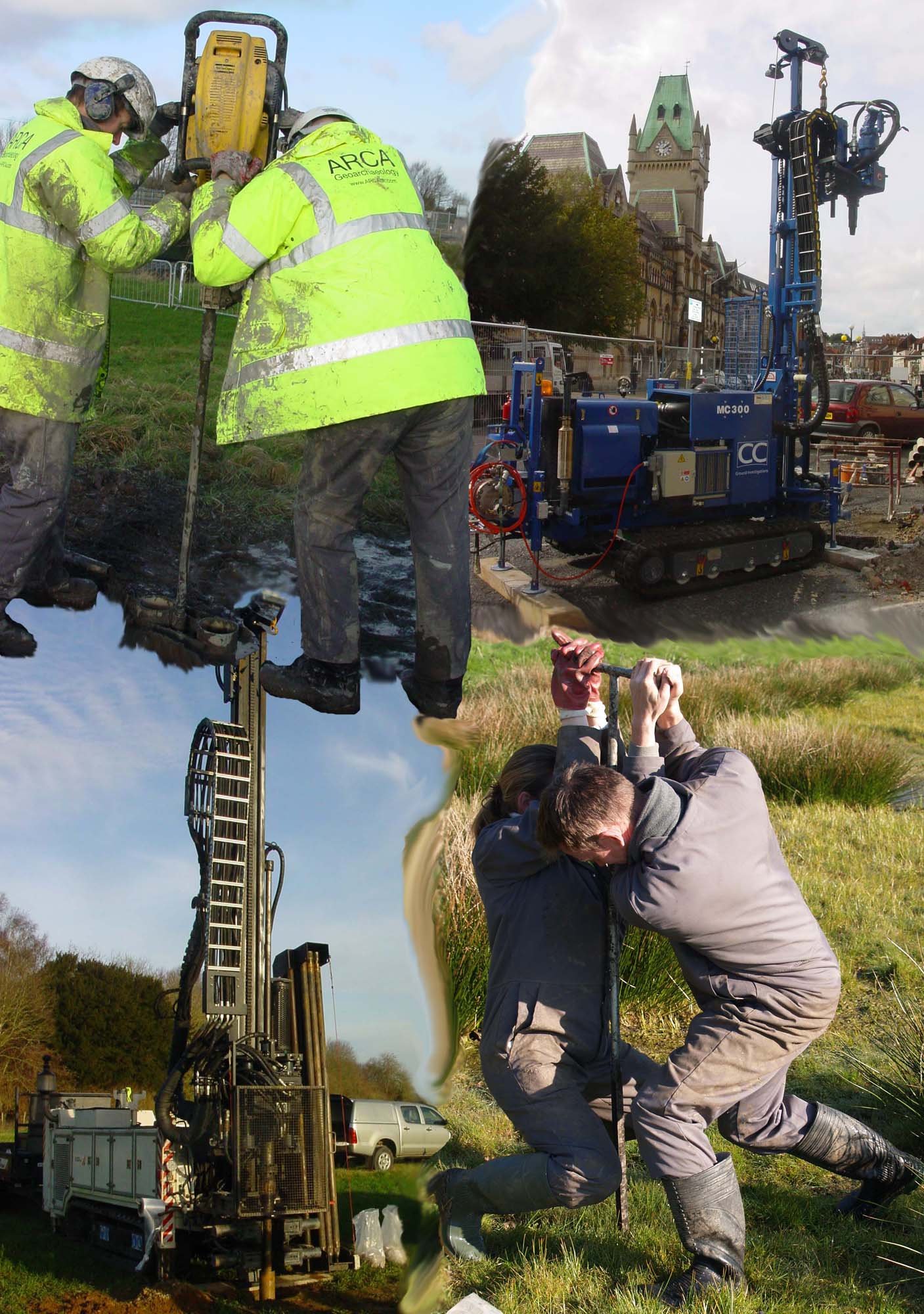Borehole surveys
Many geoarchaeological investigations involve investigation of sedimentary sequences which are either too deeply buried or too extensive in area to be investigated by conventional excavation.
Deeply buried or stratified sites of geoarchaeological interest typically occur in alluvial (river), intertidal (estuary and coastal), lacustrine (lake), urban and some colluvial (‘hillwash’) environments.
ARCA offers a range of geoarchaeological borehole drilling services for the investigation and mapping of deep sedimentary sequences. ARCA has a variety of drilling equipment suitable for sampling a range of sediment types .
ARCA’s geoarchaeological coring equipment includes both hand-operated and powered equipment. It is designed for taking high-quality undisturbed and uncompressed sediment samples for high-resolution laboratory analysis.
Geoarchaeological vs geotechnical boreholes
Geoarchaeological boreholes differ from those drilled for geotechnical purposes in that they are intended to address archaeological problems, their stratigraphy is recorded in much greater detail and sampling is undertaken both with higher precision and at a greater resolution. Our equipment has the advantage of being quick to use, cost-effective, and able to sample sediments with minimal sample loss and compression compared with other drilling methods such as Terrier rigs typically used by geotechnical contractors.
Over the years, ARCA has been required to sample a range of sediments, including coarse gravels and Made Ground, as well as 20m+ thick sedimentary sequences. In situations where heavy-duty equipment is required to examine such deposits, ARCA calls upon the services of our geotechnical partners who then deploy dynamic probe (combined percussion/rotary drilling) and Dando (shell and auger) rigs under our geoarchaeological supervision.

